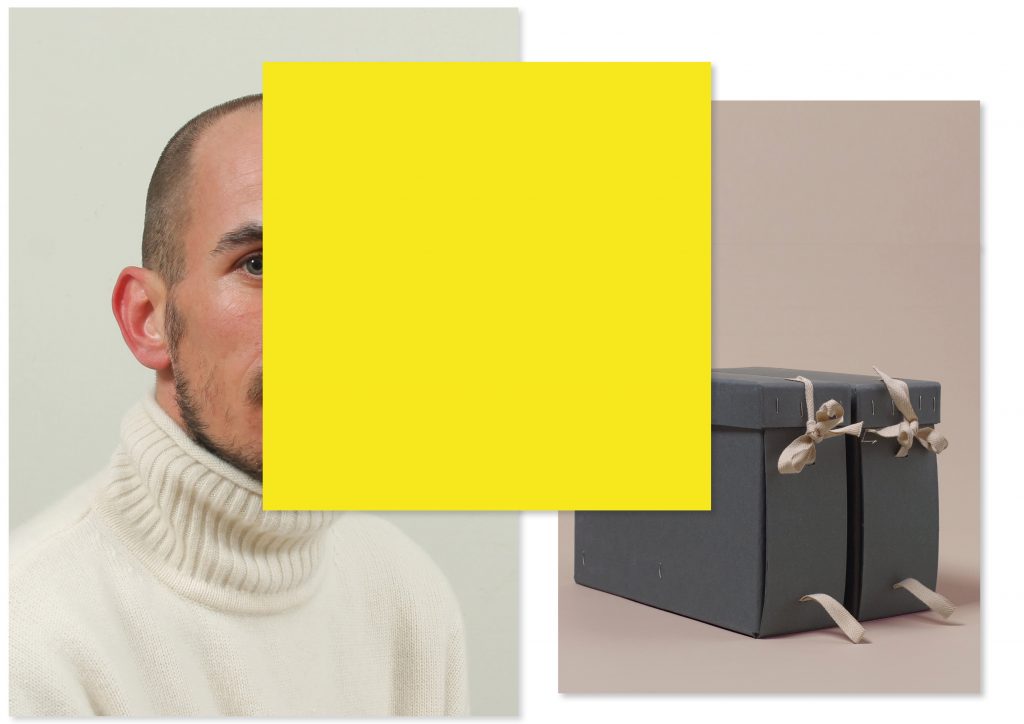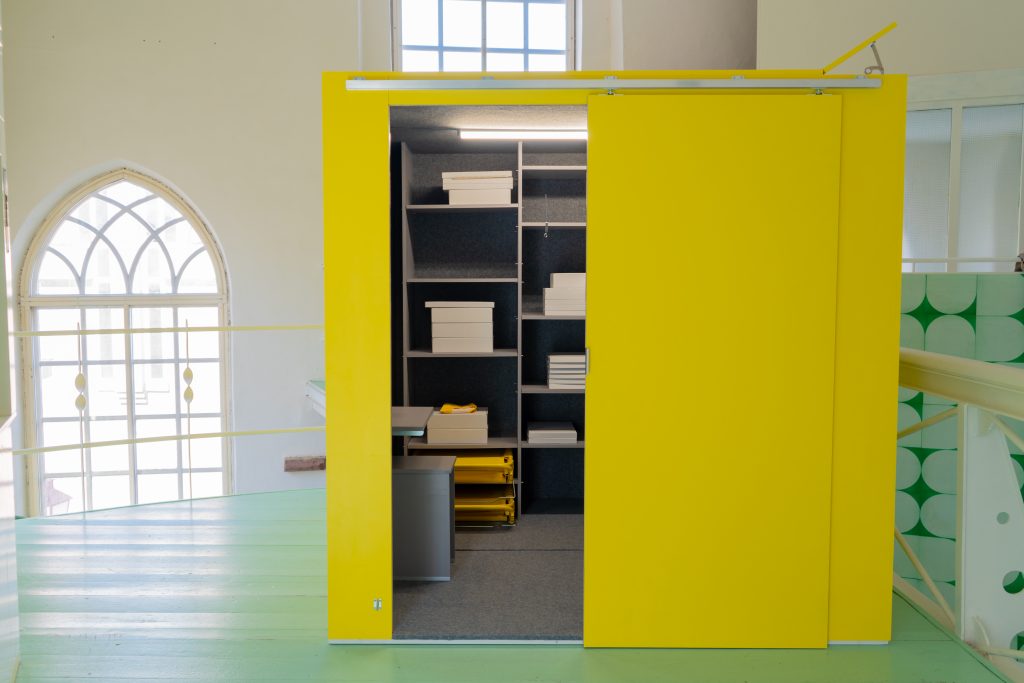
Hotel Maria Kapel, Hoorn, 2021
A place where we keep safe what we cherish deeply and value most. A place of caring, of memory and thought, around which we commune, learn and talk – or in which we hide and spend time alone, to find solace in soothing seclusion.
Lees verder (Nederlands) Met Inside Archive plaatst kunstenaar en HMK-alumnus Rik Dijkhuizen een monumentale maar ingetogen gele kubus op de mezzanine van HMK’s mintgroene ontvangstruimte, die de praktijken van care binnen de context van ruimtelijke vormgeving, archivering, en mentaal welzijn verkent. De permanente installatie fungeert zowel als een openbaar archief als een privé-schuilplaats en reflecteert op het idee van het archief als een levend lichaam dat voortdurend zorg nodig heeft, en levende lichamen als archieven die zorgzame toevluchtsoorden nodig hebben om naar terug te trekken in tijden van (persoonlijke) crisis. Inside Archive probeert twee ogenschijnlijk tegengestelde behoeftes te verenigen in één ruimtelijke interventie. Het archief, dat veelal onttrokken blijft aan de ogen van het publiek, wordt openbaar gemaakt door deze in een toegankelijke constructie midden in de ruimte te plaatsen, waarin en -omheen gebruikers in nabijheid van het archief samenkomen om ideeën en kennis uit te wisselen. Een intiem zitje in de kubus biedt een plek waar in afzondering kan worden ontspannen en bijgekomen; een tijdelijke ontsnapping aan een wereld die sterk geindividualiseerd is en wordt overspoeld met crises, zoals de hutten in bergachtige landschappen voor passerende reizigers die op zoek zijn naar een veilige schuilplaats. Inside Archive maakt onderdeel uit van het hoofdstuk Time van HMK’s jaarprogramma van 2020 Slow Burn, waarin care centraal stond. HMK nam gelegenheid om het archief (de institutionele tijd) te verzorgen en te reflecteren op de uitdagingen die de (huidige) tijd met zich meebrengt. Daarnaast sluit het project aan op het thema van HMK’s huidige jaarprogramma, On Shelter, waar wordt nagedacht over het bieden van veiligheid en onderdak in uitdagende tijden. Samenvallend met het project werkte Dijkhuizen samen met HMK-trainee Tim Kaarsemaker aan het sorteren en organiseren van het archiefmateriaal dat HMK over de jaren heeft verzameld. Zijn bevindingen worden samengebracht in een geschreven introductie en zal online en in de installatie beschikbaar worden gesteld.
With Inside Archive, artist and HMK alumnus Rik Dijkhuizen places a monumental yet understated yellow cube on the mezzanine of HMK’s minty green reception area, which explores practices of care within the context of spatial design, archiving, and mental wellbeing. The permanent installation double-functions as a public archive and private hide-out and reflects on the idea of the archive as a living body that needs continuous caring, and living bodies as archives that need caring sanctuaries to withdraw to in times of (personal) peril.
Inside Archive aims to unite two apparently opposing needs in one spatial intervention. The archive, which often remains hidden from sight, is made public by placing it in an accessible structure in the middle of the space, in and around which users gather in close proximity to its contents to exchange thought and knowledge. An intimate seat inside the cube offers a place to rest and recuperate in privacy; a temporary escape from a world that is highly individualized and flooded with crises, much like cabins in mountainous landscapes for passing travellers in need of shelter.
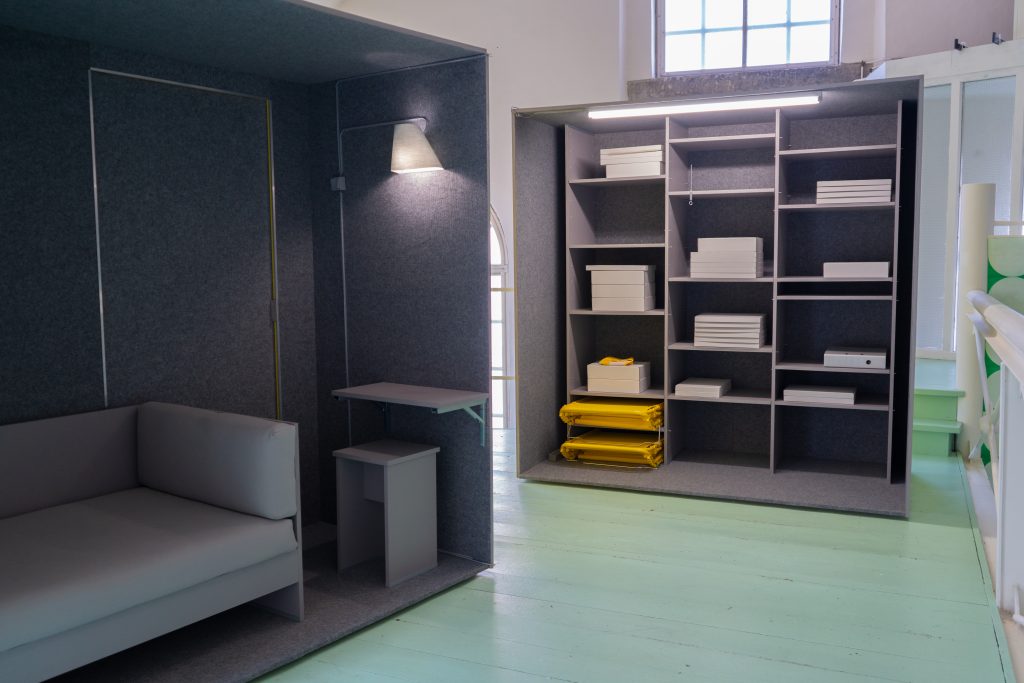

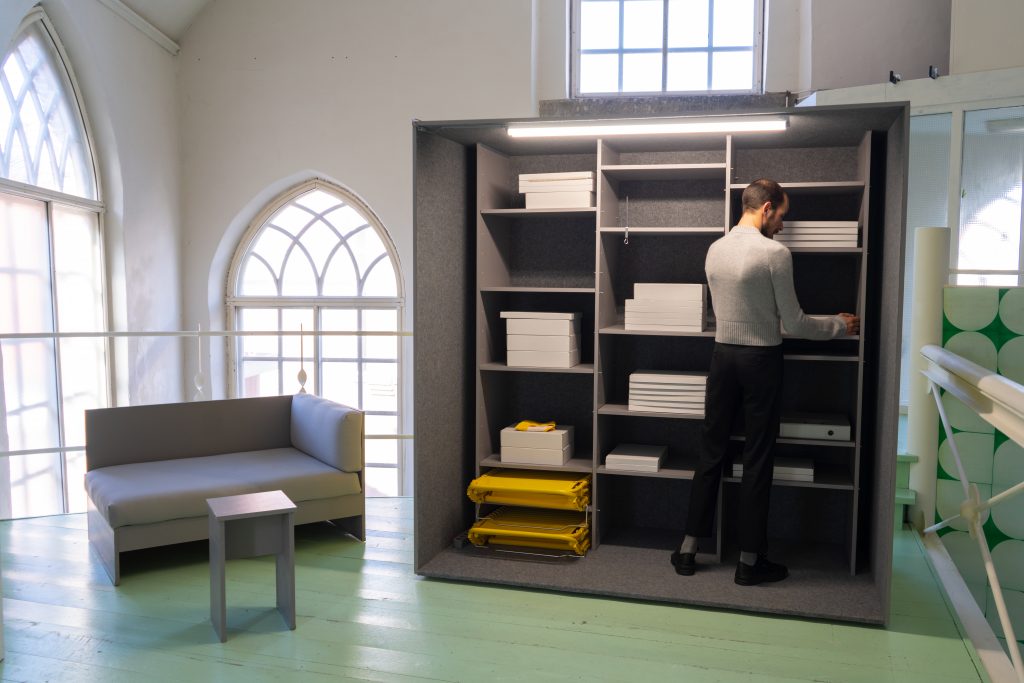

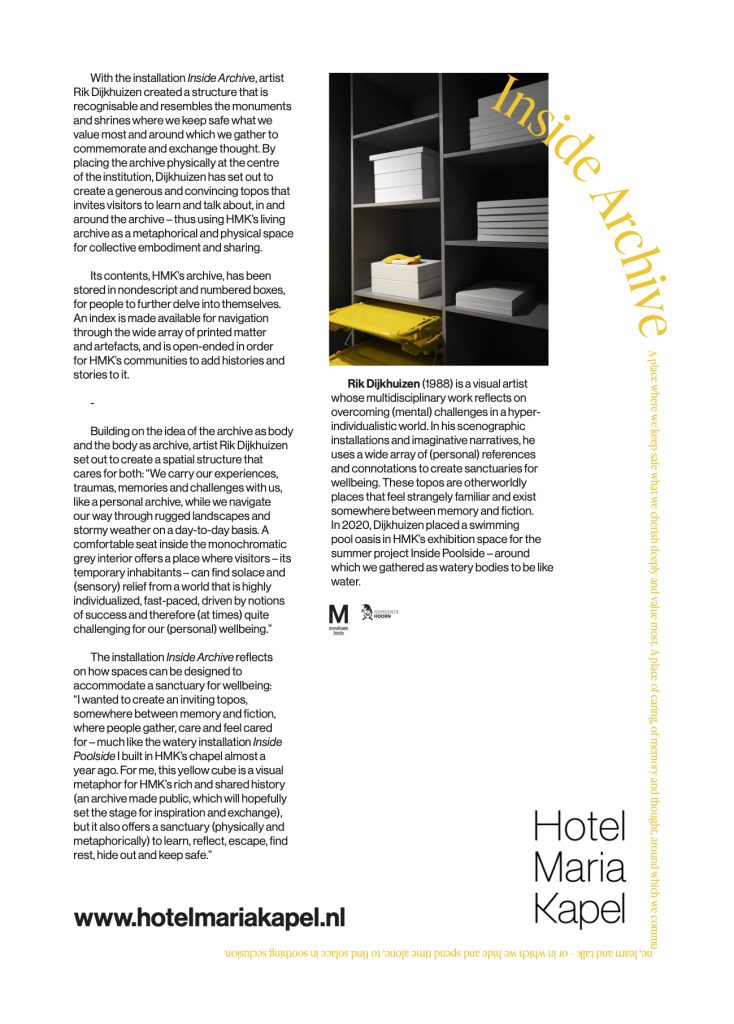
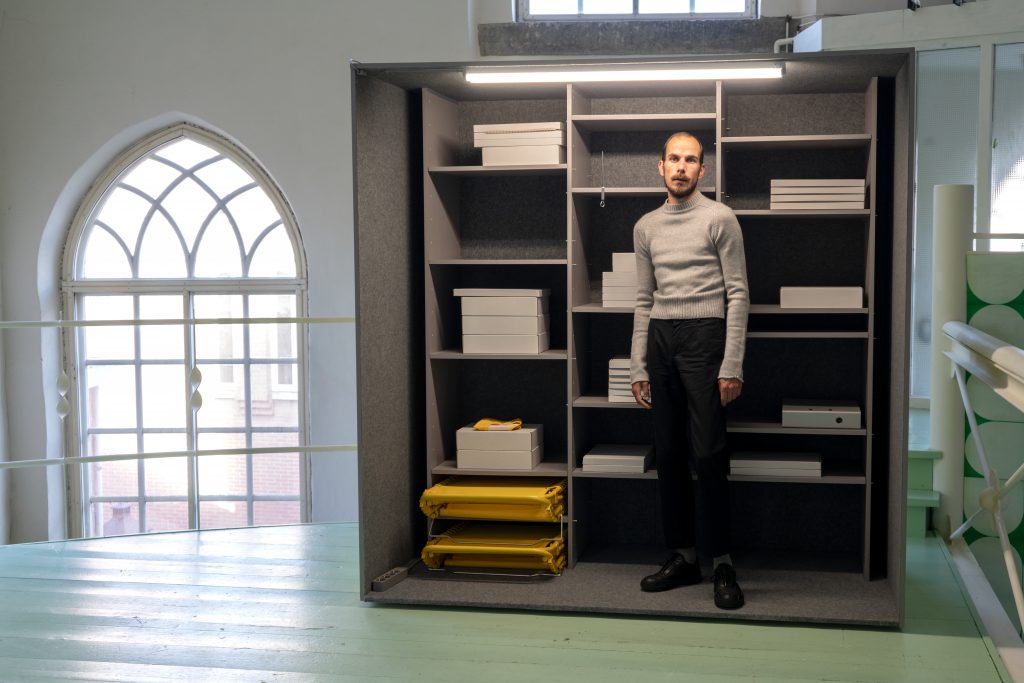
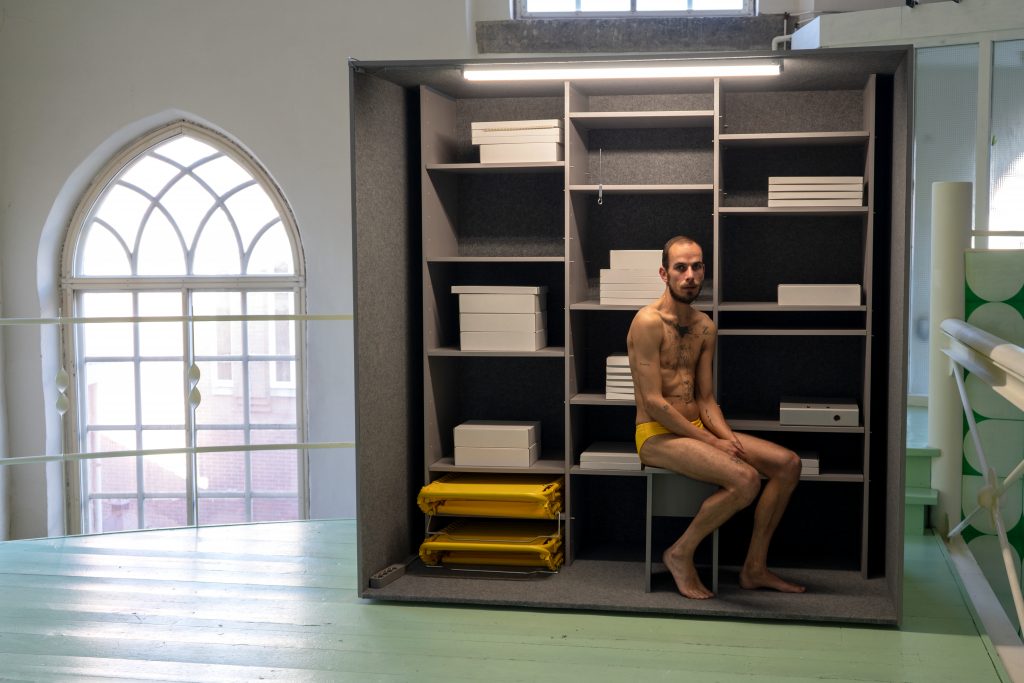
Inside Archive is part of the chapter Time of HMK’s 2020 programme Slow Burn, which centred around notions of care. HMK took time to care for the archive (the institutional time) and to reflect on the current temporal predicament. In addition, the project ties in with the theme of HMK’s current year programme, On Shelter, which reflects on providing sanctuary and safety in challenging times. To coincide with the project, Dijkhuizen worked together with HMK’s trainee Tim Kaarsemaker to sort and organise the archive material that HMK has collected over the years. His findings will be brought together in a written introduction and made available online and in the installation.
